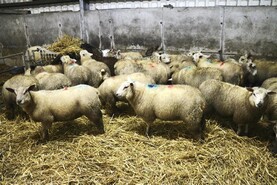Spent sheep dip
A reminder was delivered at this week’s uplands symposium about the importance of taking precautions to ensure sheep dip does not gain access to watercourses.
The obvious threat is from disposal of spent dip, but dipped animals also present a direct risk where freshly dipped sheep have access to watercourses, or there is a risk of runoff from fleeces.
It is important that sheep are not dipped in advance of forecast heavy rainfall, and the advice is also to refrain from returning sheep to grazing areas where there is a risk of sheep accessing watercourses for at least 24 hours.
In terms of disposal of spent sheep dip, the advice is to dilute at a ratio of at least 1:3 with slurry/water. Remember, such application is also governed by prohibited application periods for slurry.
Extensive information and videos relating to sheep dipping can be found at teagasc.ie/news--events/daily/sheep/catchmentcare---teagasc-sheep-dipping-demonstration.php.
There are strict regulations in Northern Ireland concerning the discharge of spent dip onto agricultural lands.
Authorisation is required for most farms from the Northern Ireland Environment Agency for the discharge of ‘hazardous substances and non-hazardous pollutants’ onto lands.
This includes the disposal of spent sheep dip (including cosmetic dips and shampoo) and waste pesticides (including tank washings not sprayed back over the target crop).
Silage quality
Reports from silage analysis points to big variation in silage quality, which is not surprising given the challenging year. Dry matter digestibility is of particular concern, while dry matter is also lower than normal in some samples seen to date.
The quality of silage will have a direct effect on animal performance and the feeding programme, which can be implemented in mid and late pregnancy, and having access to feed analysis is the starting point in putting plans in place.
LambPlus deadline
The application window to join up to the Sheep Ireland Lambplus Programme for the 2025 season is now open and will shut on 16 December. There is a cost of €50 to €100 for pedigree flocks, while commercial sheep farmers and hill farmers/breeders can sign up for free. See sheep.ie for full details.
Drafting considerations
The recent upturn in weather has greatly helped lamb performance. While the average slaughter performance of lambs has improved, there is still significant variation evident. Reports from some procurement personnel point to lambs killing out better in recent weeks, due in part to weather and on some farms the result of a sustained period of concentrate supplementation.
This is leading to more lambs falling into the category of exceeding carcase weight limits. It is important to weigh lambs being finished on a high level or ad-lib concentrates regularly, as it is typical for hill lambs to gain upwards of 200g daily and lowland lambs upwards of 270g to 300g daily.
For farms treating lambs for liver fluke, it is important to review your treatment programme well in advance of the target slaughter date given the significant withdrawal periods of flukicides. Products selected on most farms should at least target immature and adult liver fluke at this stage of the year.





SHARING OPTIONS: